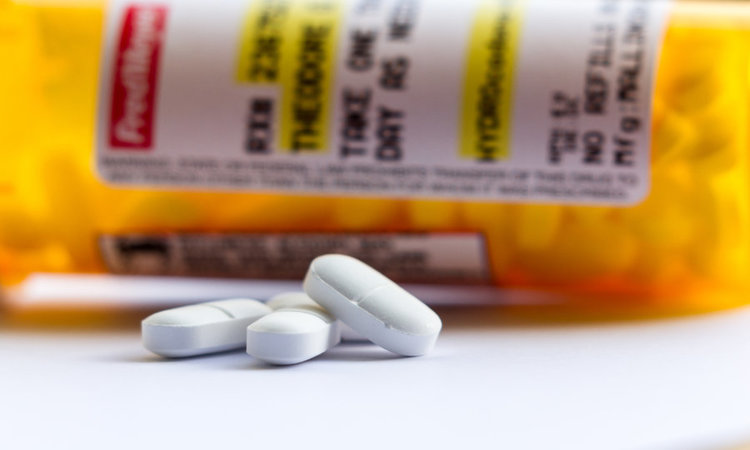
Vicodin, a combination of the semi-synthetic opioid hydrocodone and acetaminophen, for the relief of moderate-severe pain. It acts on the brain by blocking pain receptors and also can induce feelings of well-being, making it highly effective but also very addictive.
Signs and Symptoms
People who take Vicodin may feel a rush of euphoria and relaxation in addition to a notable reduction in pain. Over time, however, users can develop a tolerance, and they will require more and more of the drug to achieve the same results.
Common symptoms of abuse include the following:
- Drowsiness
- Inability to concentrate
- Severe anxiety and paranoia
- Severe moodiness
- Nausea and vomiting
Vicodin abusers may resort to fraudulent means to obtain the drugs, including engaging in a behavior known as “doctor shopping.” Doctor shopping describes the practice of visiting multiple doctors or pharmacies in an attempt to obtain more prescription drugs.
Due to an intense focus on using the drug, almost everything else in a person’s life may be neglected. Addicts may see their mental and physical health deteriorate, and their personal, professional, and financial situation might eventually begin to fall apart.
Effects of Vicodin Abuse
Even casual users or those strictly adhering to a doctor’s orders may experience the following symptoms:
- Itching
- Swelling
- Weakness
- Dizziness
- Vomiting and upset stomach
If taken for an extended period, Vicodin use can cause medical issues, including liver damage or failure, jaundice, and urinary system issues. Because it is a central nervous system (CNS) depressant, Vicodin naturally reduces heart rate and respiration, especially if used in large doses.
Symptoms of Vicodin Addiction
Identifying an addiction to Vicodin can be difficult. Some people acquire a dependence (having withdrawals and tolerance) to their prescription and don’t realize it until they stop taking it. Dependence can develop into an addiction, which is marked by the compulsive urge to use despite adverse consequences.
The Fifth Edition of the Diagnostic and Statistical Manual of Mental Disorders (DSM-V) identifies specific symptoms that manifest in those who have developed an addiction. According to the DSM-V, if a person exhibits three or more of the following seven criteria, they probably have an addiction:
DSM-V Diagnostic Criteria for Vicodin Addiction
1. An increasing need for larger doses over time to achieve the same effects.
2. Experiencing withdrawal symptoms upon discontinuation.
3. Using more of the drug than initially intended.
4. Having constant cravings for Vicodin or making unsuccessful attempts to decrease use.
5. Spending a significant amount of time using or obtaining Vicodin.
6. Neglecting obligations due to Vicodin abuse.
7. Continuing to use Vicodin or refusing treatment despite recognizing the consequences of abuse.
Vicodin addiction can be challenging to overcome due to withdrawal. Patients may experience symptoms of Vicodin withdrawal even when it is used as directed by a physician.
Symptoms of Vicodin Withdrawal
Symptoms of Vicodin withdrawal usually aren’t life-threatening – however, they can be very unpleasant and contribute to a relapse. These symptoms include the following:
- Anxiety
- Irritability/agitation
- Yawning
- Runny nose
- Insomnia
- Sweating and chills
- Muscle aches
More serious symptoms may include:
- Cramps
- Diarrhea
- Nausea and vomiting
- Muscle and bone pain
The time it takes for symptoms of withdrawal to onset varies between individuals. Both short- and long-term use of the drug can result in various symptoms.
Vicodin Overdose
An overdose may occur when a person takes a dose that is too large or combined with another CNS depressant, such as alcohol, other opioids, benzodiazepines, or barbiturates.
Overdose symptoms may include the following:
- Nausea and vomiting
- Constricted/pinpoint pupils
- Hypotension (low blood pressure)
- Fatigue
- Weak pulse
- Slowed, shallow, or labored breathing
- Respiratory arrest
- Cyanosis (blue tint to lips and fingernails)
- Coma
- Seizures
Vicodin Withdrawal
One of the most commonly reported problems with the use of the drug is that withdrawal symptoms can manifest after reducing the dose or waiting longer between doses. For this reason, many users are afraid to begin the recovery process.
Withdrawal symptoms may include:
- Pain in the muscles and bone
- Sleep disturbances
- Restlessness and uncontrollable leg movements
- Nausea and vomiting
- Diarrhea
- Chills
Treatment for Vicodin Addiction
Addiction to Vicodin can adversely affect both the health and well-being of the person suffering as well as impact the lives of those who love them. Also, prescription opioid addiction can lead to the abuse of other more potent illegal drugs such as heroin.
Fortunately, addiction can be effectively treated using an integrated addiction treatment program that includes essential, evidence-based services, such as psychotherapy, counseling, education, and group support.
Our center employs compassionate medical providers who specialize in addiction and deliver these services to clients with care and expertise. We provide clients with the tools they so direly need to achieve abstinence and enjoy a long-lasting life of fulfillment and sobriety.
We can help you reclaim the life you deserve free from drugs and alcohol. Please contact us as soon as possible to find out how we can help!
Related: What Are Narcotic Drugs?